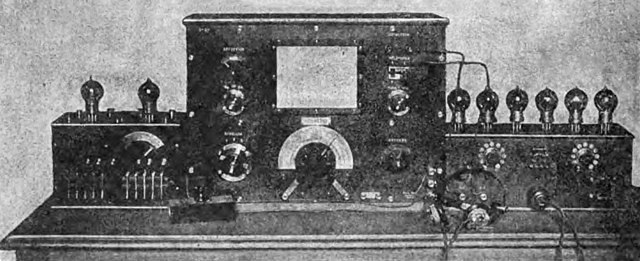A unijunction transistor (UJT) is a three-lead electronic semiconductor device with only one junction. It acts exclusively as an electrically controlled switch.
Unijunction transistors
UJT die: the larger contact in the centre of the crystal is the emitter, the smaller one is B1; B2 is at the bottom of the crystal
In electronics a relaxation oscillator is a nonlinear electronic oscillator circuit that produces a nonsinusoidal repetitive output signal, such as a triangle wave or square wave. The circuit consists of a feedback loop containing a switching device such as a transistor, comparator, relay, op amp, or a negative resistance device like a tunnel diode, that repetitively charges a capacitor or inductor through a resistance until it reaches a threshold level, then discharges it again. The period of the oscillator depends on the time constant of the capacitor or inductor circuit. The active device switches abruptly between charging and discharging modes, and thus produces a discontinuously changing repetitive waveform. This contrasts with the other type of electronic oscillator, the harmonic or linear oscillator, which uses an amplifier with feedback to excite resonant oscillations in a resonator, producing a sine wave.

The blinking turn signal on some motor vehicles is generated by a simple relaxation oscillator powering a relay.
A vacuum tube Abraham-Bloch multivibrator relaxation oscillator, France, 1920 (small box, left). Its harmonics are being used to calibrate a wavemeter (center).




